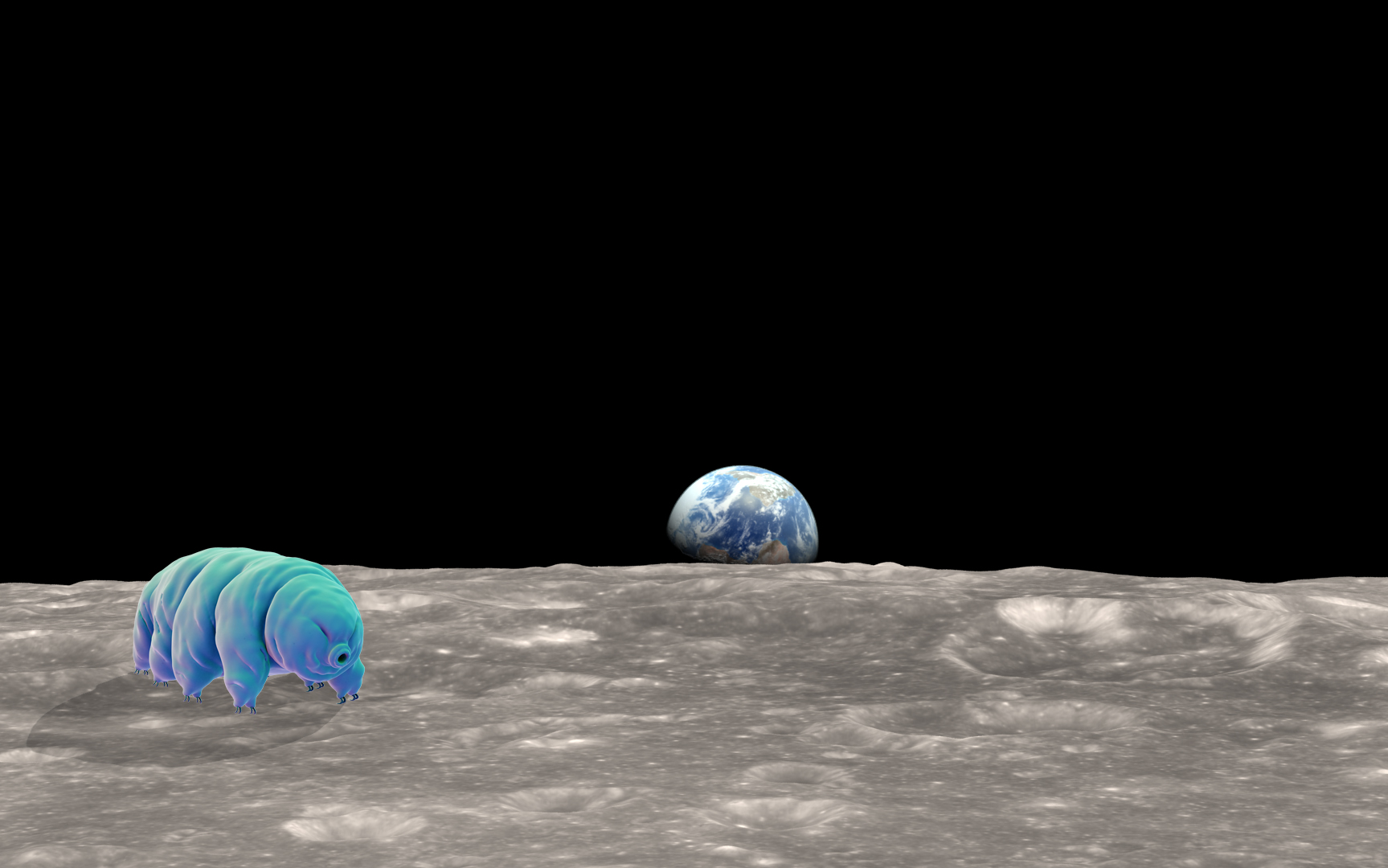Thousands of Tardigrades Stranded on the Moon After Lunar Lander Crash

When you look up at the moon, there may now be a few thousand water bears looking back at you.
The Israeli spacecraft Beresheet crashed into the moon during a failed landing attempt on April 11. In doing so, it may have strewn the lunar surface with thousands of dehydrated tardigrades, Wired reported yesterday (Aug. 5).
Beresheet was a robotic lander. Though it didn't transport astronauts, it carried human DNA samples, along with the aforementioned tardigradesand 30 million very small digitized pages of information about human society and culture. However, it's unknown if the archive — and the water bears — survived the explosive impact when Beresheet crashed, according to Wired. [8 Reasons Why We Love Tardigrades]
The tardigrades and the human DNA were late additions to the mission, added just a few weeks before Beresheet launched on Feb. 21. Much like Cretaceous fossils locked in amber, the DNA samples and tardigrades were sealed in a resin layer protecting the DVD-size lunar library, while thousands more tardigrades were poured onto the sticky tape that held the archive in place, Wired reported.
But why send tardigrades to the moon? Tardigrades, also known as moss piglets, are microscopic creatures measuring between 0.002 and 0.05 inches (0.05 to 1.2 millimeters) long. They have endearingly tubby bodies and eight legs tipped with tiny "hands"; but tardigrades are just as well-known for their near-indestructibility as they are for their unbearable cuteness.
Tardigrades can survive conditions that would be deadly to any other form of life, weathering temperature extremes of minus 328 degrees Fahrenheit (minus 200 degrees Celsius) to more than 300 F (149 C). They also handily survive exposure to the radiation and vacuum of space.
Another tardigrade superpower is their ability to dehydrate their bodies into a state known as a "tun." They retract their heads and legs, expel the water from their bodies and shrivel up into a tiny ball — and scientists have found that tardigrades can revive from this dehydrated state after 10 years or more.
Get the Space.com Newsletter
Breaking space news, the latest updates on rocket launches, skywatching events and more!
In other words, if any creature were capable of surviving a crash-landing in space, it would probably be a tardigrade. Whether any of the Beresheet tardigrades are biding their time in a lunar impact crater until they can be resuscitated, only time will tell.
- Extreme Life on Earth: 8 Bizarre Creatures
- See Spectacular Lunar Mission Images in 3D (Photos)
- In Photos: A Look at China's Space Station That's Crashing to Earth
Originally published on Live Science.
Join our Space Forums to keep talking space on the latest missions, night sky and more! And if you have a news tip, correction or comment, let us know at: community@space.com.











